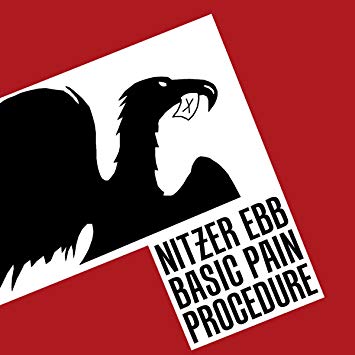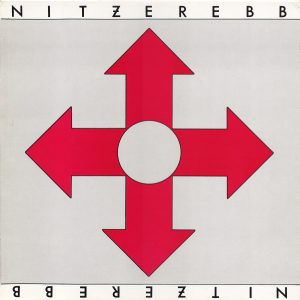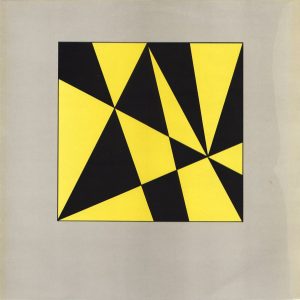The news that Nitzer Ebb were reforming as a live act was a cue for me to make them the subject of my fourth listeners guide, and my first to cover a British act. Indeed, they hail from Chelmsford, only a few miles from my own home territory on the Essex/East London borders. And a year working in their home city only proved the old adage that no prophet is hailed in their homeland. Not one of my colleagues had any idea who they were. OK, this may have been during EBM’s early 00s nadir, but I doubt any of them have become aware of these particular local legends since.
This wouldn’t be such disappointment if Nitzer Ebb’s influence had spread only to various German and Swedish copyists with the hermetically-sealed ‘industrial scene’. The existence of said bands is acknowledged about once a decade by the English-speaking electronic music press, who occasionally work out that EBM-and-techno-work-quite-well-together. But the Ebb’s influence has spread much further than that. I guess it’s down to me to tell the story. Again.
Early Ebb
Nitzer Ebb formed in 1982, the original line-up being Douglas McCarthy (vocals), Bon Harris (vocals, keys, drums) and David Gooday (drums). Whilst they had a mutual admiration for various post-punk bands, they avoided drawing influence from anything overtly ‘gothic’ in nature (not that the genre even existed yet). More influential were the works of DAF and Einstürzende Neubauten. And, surprisingly enough, disco, a genre in the process of morphing it’s synthetic bass grooves and four-to-the-floor into the dominant house music style. But look elsewhere for a full history of that.
Nitzer Ebb’s first released was a cassette, self-released in 1983, entitled Basic Pain Procedure. Thankfully, you don’t have to hunt it down and find a 2nd-hand car to listen to it in, as it was re-released in 2012. And true to their influences, the overall style is best described as ‘DAF in English’. One synth, one vocal and the drums driving everything forward. And that’s really all there is to it.
The slow, eerie The Passage is the only track to use multiple synth layers, every other track just hits upon a loop and lets Doug vocalise over the top. His voice is certainly strong enough to give substance to the quite minimal material, but the distinctive Ebb sound hasn’t taken shape yet. The individual tracks aren’t exceptionally memorable – only Crane was reworked at a later date, and hence this album shouldn’t be the first port of call for newcomers. But all devoted Ebbheads should get round to this eventually.
Singles and Versions: Originally released on cassette, this album can now be found on CD and vinyl also. All the cassette and CD version have an additional live set included, doubling the overall length. Worth listening to for early versions of “Smear Body” and “Violent Playground”, though their brief salute to “Whiter Shade of Pale” is best treated as a bad joke.
Nitzer Ebb’s next releases were in 1985. Setting up their own label ‘Power of Voice Communications’, they issued a series of singles on vinyl. The first was Isn’t It Funny How Your Body Works. Technically in the same style as their earlier cassette, but all the pieces come together with sufficient cohesion to give their first (admittedly minor) hit. Also notable are the tracks Cold War, for a bit of mid-80s social awareness (add some noisy guitar and it would have passed for early Killing Joke), and a remake of Crane, essentially the same song, but with synth, vocals and drum all hitting harder than before, proof that Nitzer Ebb were certainly learning-where-all-the-knobs-go studio-wise.
Next came Warsaw Ghetto. By now the band’s style was seriously starting to crystallise. The title track (on ‘The Killing Side’) delivers a mid-tempo throb, over which Doug McCarthy continually repeats phrases relating to ‘catastrophe’, ‘missing years’ and other statements about the desperate state of the still-existing Eastern Bloc. The B-side (aka ‘The Kissing Side’) throws a curveball – So Bright, So Strong is the most upbeat track they’ve written so far. The vocals are self-consciously ‘softer’ than before, and compared with their later works sound quite silly, but it’s still a side of their early years I’m glad I’ve heard, as they seem determined to leave it off later compilations.
1986 saw the release of Let Your Body Learn and Murderous, and these were sufficient to attract the attention of Mute Records, who’d already established a thing for electronic bands from Essex. Originally planning to market them as a dance act, Daniel Miller quickly realised they were better suited with the mantle of a bona-fide ‘band’, and now the real adventure begins.




